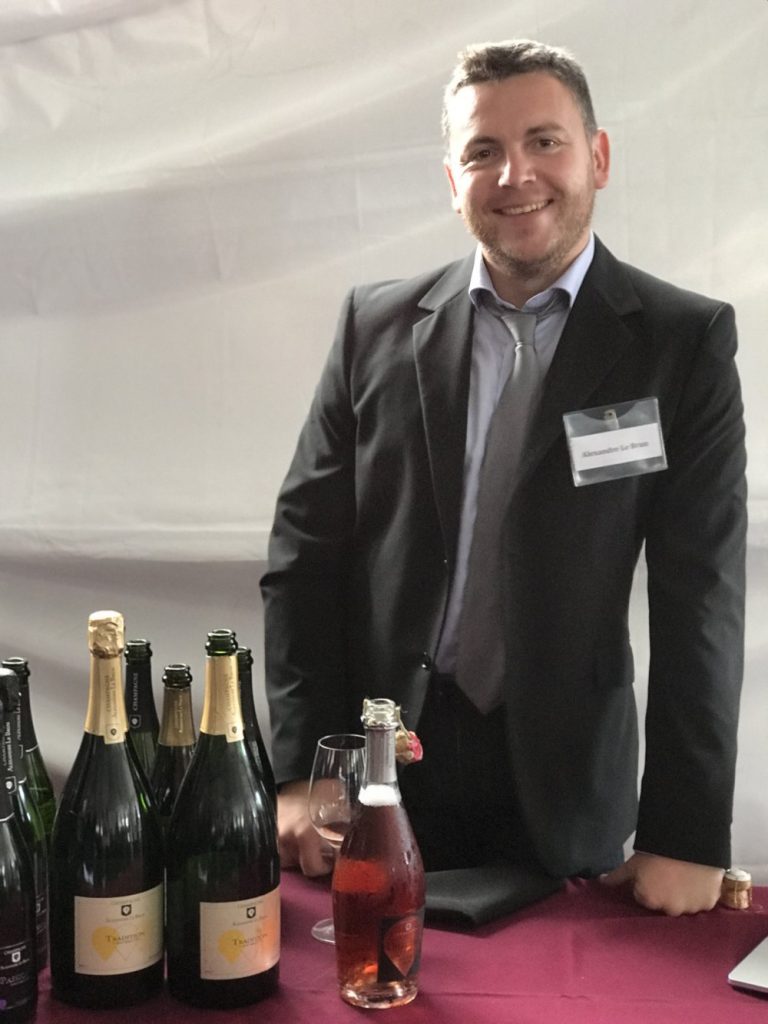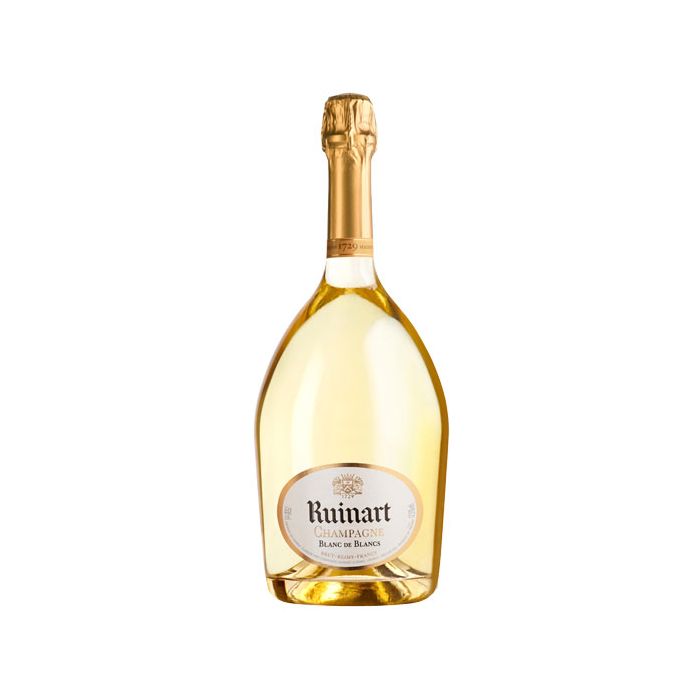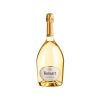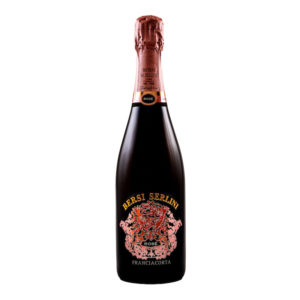| Country | |
|---|---|
| Region | Champagne |
| Grape Variety | Chardonnay |
| Producer | Alexandre Le Brun |
| Certification | Sustainable |
Ruinart – Blanc de Blancs Magnum
£200.00
Golden pale-yellow with persistent bead on the side of the glass. This Chardonnay shows a light evolution and expresses the typical aromas from the long lees ageing. The nose is very complex with mineral, white flowers and yeasty notes. On the palate it’s fresh, and full bodied, with almond notes candid fruit flavours. The finish is long and persistent, and the complexity and elegant of this white wine is very distinctive. A classical Grand Cru Blanc de Blancs.
Out of stock
Create your mixed case and save over 15% when you buy 6 to 12 bottles.
Mix and Match applied.
Colour
FLAVOURS
Palate
Sweetness
Acidity
Body
Mousse
Abv
Serve At
Food Pairing
The first hints of life of Champagne “Le Brun” was founded in 1750 in Monthelon. Since then they perpetuate the tradition and Alexandre Le Brun represents the family’s 9th generation of winemaker. They work in a vaulted cellar dating back to 1822 and they grow the grapes they use to make their Champagne. They cultivate their vines with love and passion. “With healthy, quality grapes, it’s a breeze to make good champagnes” is Alexandre’s motto.
The grape harvest is only the first step in a very long process. His winemaking is original and atypical and he crafts very fine wines. Alexandre Le Brun is a récoltant manipulant meaning that he makes and markets his Champagne under his own label, from grapes exclusively sourced from his own vineyards and processed on his own premises. He cultivates just over three hectares of vines, with plots in Monthelon, Mancy, Morangis, Chavot-Courcourt, Grauves (1er cru), Sézanne, Chouilly (grand cru) and Epernay.
Those parcels allow a extraordinary alchemy of the Chardonnay, Pinot Noir and Pinot Meunier grape varieties.
Champagne
Champagne is the world’s most famous sparkling wine, and takes its name from the Champagne region in north east France.
Champagne’s fame and success is, of course, the product of many complex factors. And yet there are three key reasons of which we can be reasonably certain. First, the all-important bubbles, which make it stand out from less “exciting” wines. Second, the high prices that Champagne commands, which make it feel somewhat exclusive and special. Third, two centuries of clever marketing to a willing and highly receptive consumer base.
Located at a northern latitude of 49°N, the Champagne region lies at the northern edge of the world’s vineyard-growing areas, with lower average temperatures than any other French wine region. In this kind of cool climate, the growing season is rarely warm enough to ripen grapes to the levels required for standard winemaking. Even in temperate years, Champagne’s grapes still bear the hallmark acidity of a marginal climate, and it was only the discovery of secondary fermentation that provided a wine style capable of harnessing – and even embracing – this tartness.
Pinot Noir, Pinot Meunier and Chardonnay are the primary grape varieties used to make Champagne – a recipe used for sparkling wines across the world. It is a little-known fact that four other varieties are also permitted for use in Champagne and are still employed today, albeit in tiny quantities. They are Pinot Blanc, Pinot Gris, Petit Meslier and Arbane.




